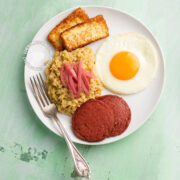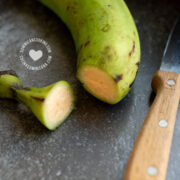If you love mofongo --and who doesn't?-- you will scream with joy when you try this delicious Dominican mofongo with roasted plantain (a light version, without frying). Just as tasty, but lighter.
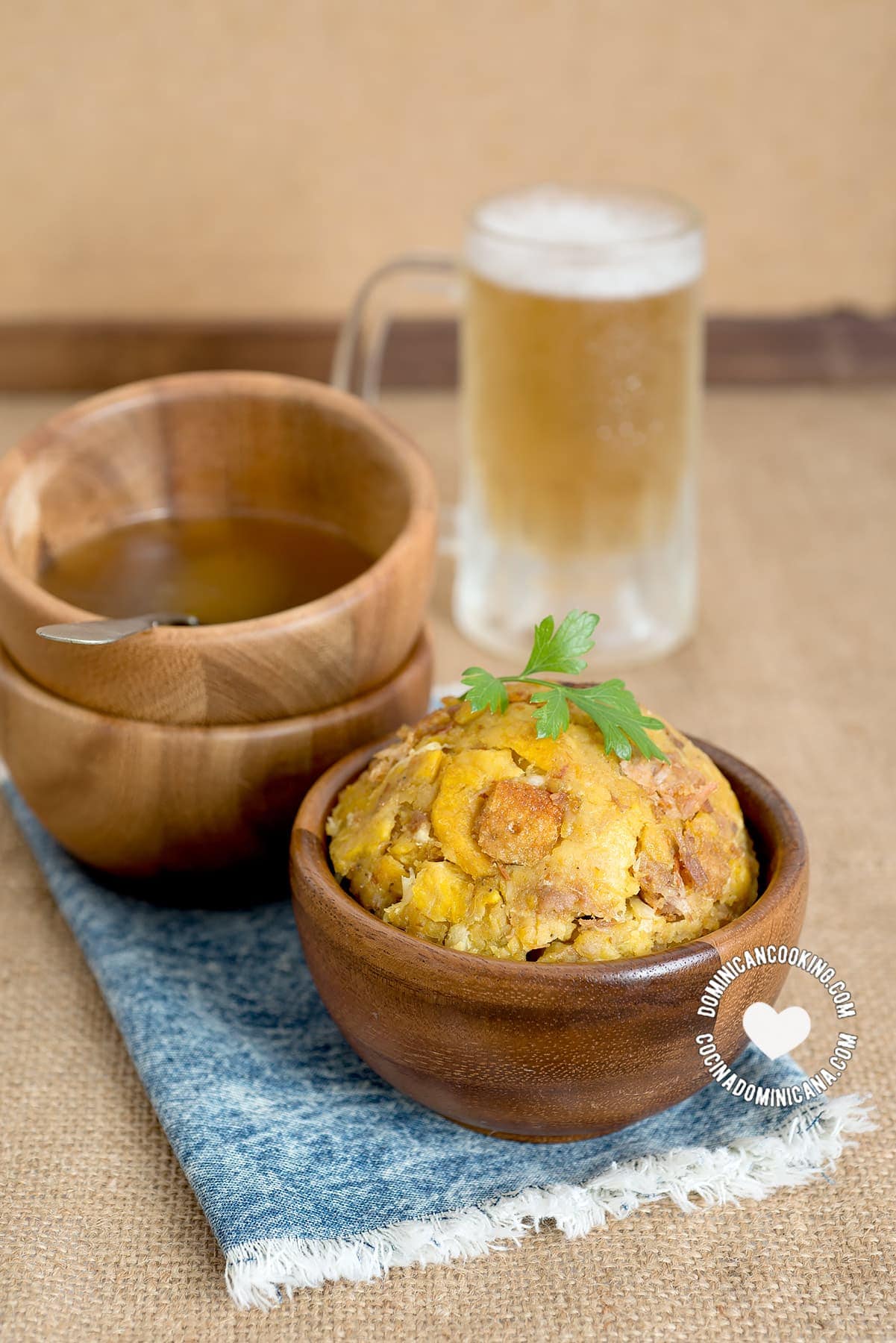
Why we ❤️ it
We all know and love the classic fried mofongo, (click on the link to see the recipe and video if that's the one you're looking for), but that ball of yumminess has a million calories (rounding up). I've come with good news: This mofongo (light, non-fried version) is as tasty as the fried one.
And in better news: This is based on the authentic traditional Dominican mofongo.
Traditional Dominican mofongo
If the words "authentic traditional Dominican mofongo" come as a surprise to you, you're probably Boricua, and you're not alone. The first time I ate what is now the most popular version of mofongo (fried) I thought that it was just another Dominican dish I didn't grow up with.
While I was fact-checking the introduction to our fried mofongo recipe, I learned a whole lot myself. Mofongo is possibly a pan-Caribbean dish (it may exist in one way or another in Cuba, the Dominican Republic, and Puerto Rico). In an 1875 dictionary of Cuban words (1), I found a mention of a dish called "mogo" that sounds like something between a mangú and a mofongo (there's a Mexican mogo too).
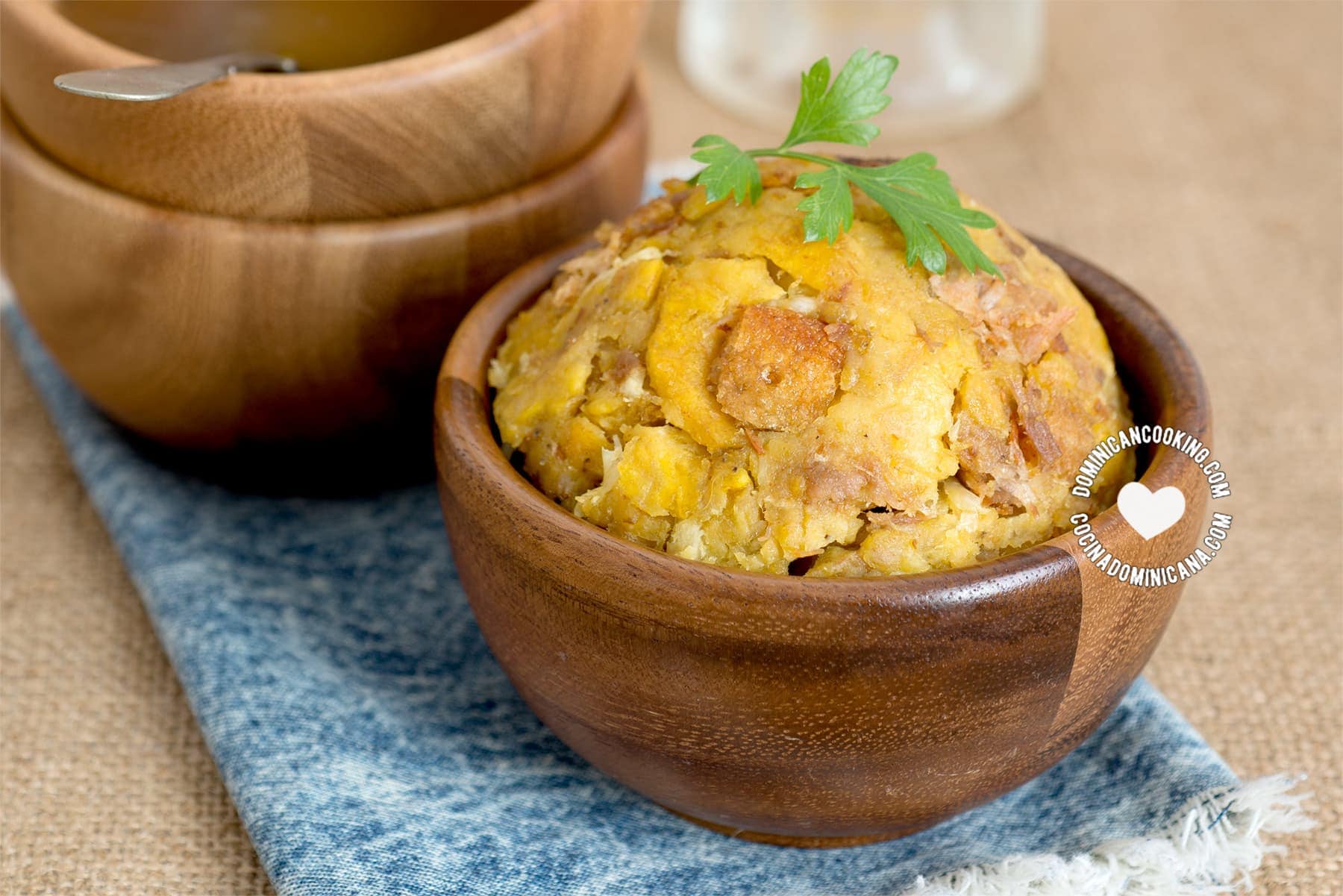
History
In Dominican cookbooks from the middle of the last century, all mofongo recipes were based on roasted plantain [2][3]. And it was the case even in the mid-20th century editions. I also remember that my grandmother used to make something like this.
Dominican mofongo turns out to be a different version than fried, and it was made with plantains roasted under hot ashes.
Interestingly, there was already a soup based on a similar principle in our collection of traditional recipes.
So, although we have made known to the world our informed opinion that fried mofongo comes from Puerto Rico, it is clear that roasted plantain mofongo was a Dominican dish probably during the same time, and perhaps - I speculate - a proto-mofongo of a common African origin also found its way to Cuba. My belief that both mofongo and mangú came from our African side of the family explains perfectly how all this happened.
Serving suggestions
Instead of broth, you can serve this with our sauce-rich camarones guisados (shrimp) (check this Dominican shrimp mofongo recipe for the fried version), or pollo guisado (chicken), or even cerdo guisado (pork).
About this recipe
So here I bring you a roasted plantain mofongo that has its charm. And perhaps it is a tribute to our great-grandmothers' mofongo.
This cooking method does not produce the same consistency as fried mofongo, the fried mofongo itself can be a bit dry and requires a lot of sauce or broth to "lubricate" the throat. This is even more necessary in this dish, so don't be stingy with it. Add a little more water if necessary, it doesn't have to be thick.
This recipe serves 4 servings.

Recipe

[Recipe] Traditional Dominican Mofongo (With Roasted Plantains, No Frying)
Ingredients
For the plantains
- 4 plantain (green, unripe), peeled
- 1½ teaspoon Salt
- ⅓ cup olive oil
- 8 garlic cloves, mashed
- 6 cups vegetable broth, (make it with our recipe)
Instructions
- Roasting the plantains: Bake plantains in a preheated oven at 400ºF [200ºC] for 35 minutes. The plantains will turn a light golden color and will be crispy on the outside, remove from the oven and mash with a pestle.
- Cooking garlic: In a pan heat olive oil over very low heat. Stir in garlic and sprinkle with salt. Cover and simmer for 10 minutes, stirring occasionally, and making sure the heat is low enough that the garlic does not burn or change to a dark color. Set aside.
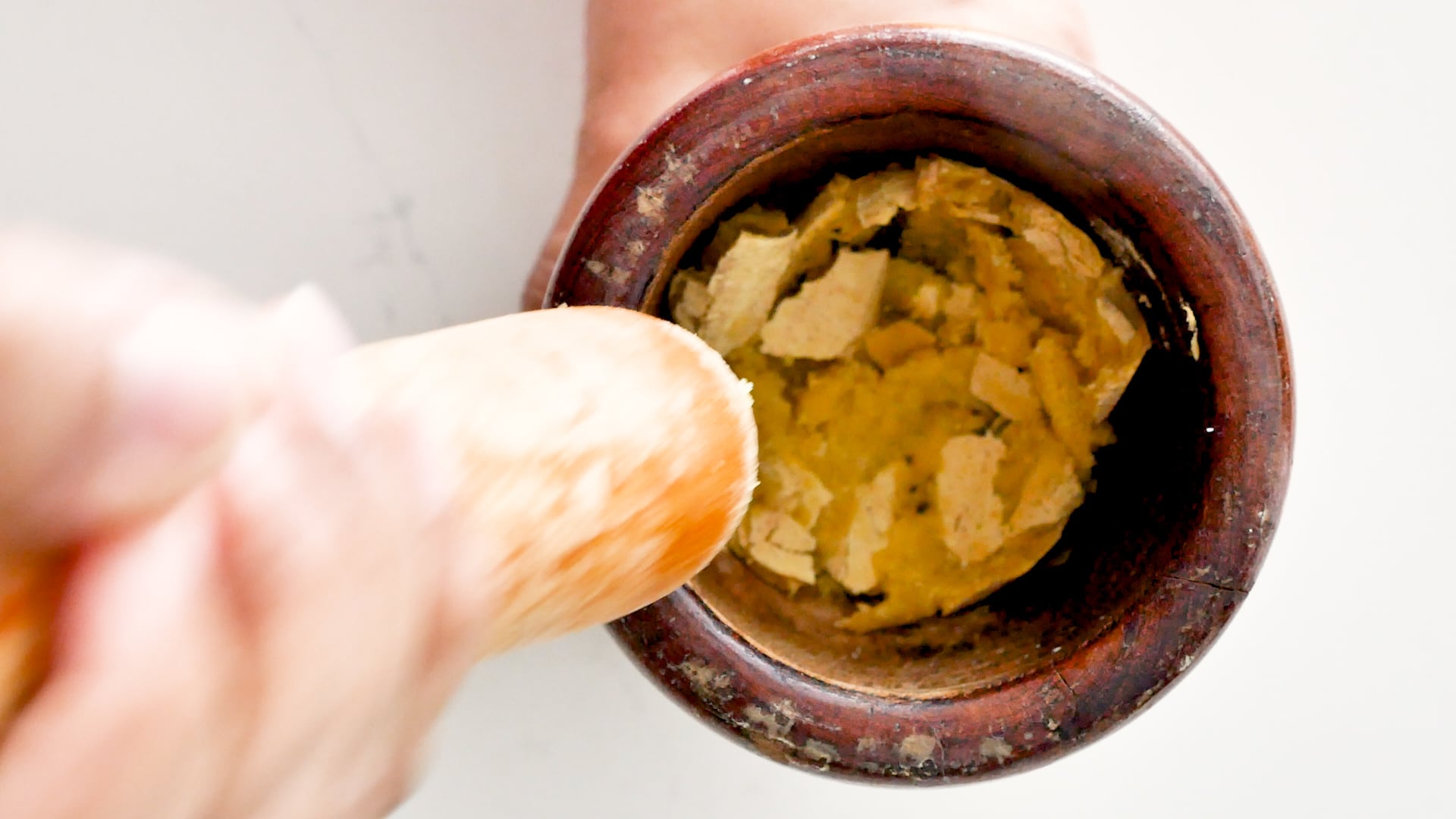 Making plantain balls: Unwrap the plantains. Mash one by one in a mortar and pestle, adding to each plantain ¼ of the oil and garlic. Form each plantain into a ball, or scoop into a bowl and make a hole in the center (see pictures), and serve with the shrimp.
Making plantain balls: Unwrap the plantains. Mash one by one in a mortar and pestle, adding to each plantain ¼ of the oil and garlic. Form each plantain into a ball, or scoop into a bowl and make a hole in the center (see pictures), and serve with the shrimp.
Nutrition
Nutritional information is calculated automatically based on ingredients listed. Please consult your doctor if you need precise nutritional information.
References:
(1) Amanda Ornes de Perelló, Cocina Criolla. Sto. Dgo: Ed. del Caribe, 1962.
"Mafongo [sic] [...] Se asan plátanos y se majn [sic] y se mezclan con chicharrón molido."
(1) Ligia de Bornia. Comidas Típicas Dominicanas. Sto. Dgo: Arte y Cine, 1965
"Mofongo [...] Maje los plátanos asados y los chicharrones en el mismo pilón."
(2) Esteban Pichardo. Diccionario Provincial Casi Razonado de Vozes y Frases Cubanas. Habana: Imp. El Trabajo, 1875
"[...]plátano salcochado y majado con manteca [...] En Bayamo . se denomina Mogo, que tal vez será síncopa de Mofongo, palabra de Nigricia, usada en algunas de las Antillas."


